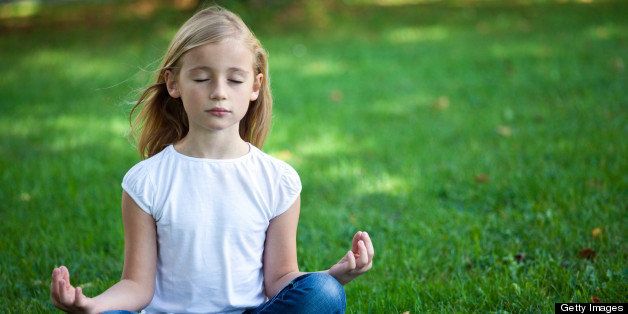Contents
Meditation in children: a practice to calm your child
Meditation brings together a set of exercises (breathing, mental visualization, etc.) aimed at focusing your attention on the present moment and more precisely on what is happening in your body and in your head. Prof. Tran, pediatrician, explains the benefits of this practice for children.
What is meditation ?
Meditation is an ancient practice that first appeared in India over 5000 years ago. It then spread to Asia. It was not until the 1960s that she became popular in the West thanks to the practice of yoga. Meditation can be religious or secular.
There are several types of meditation (vipassana, transcendental, zen) but the best known is mindfulness meditation. Its health benefits are recognized today. “Mindful meditation is being aware of what is going on inside and outside of your body and mind, these two entities being permanently connected,” explains Prof. Tran. The pediatrician has been using it for over 10 years to treat or alleviate certain disorders and problems in children such as stress, hyperactivity, lack of concentration, chronic pain or even lack of self-esteem.
Meditation to let go of stress
Stress is the evil of the century. It affects both adults and children. It can be harmful when it is permanent. “In children and adults alike, constant stress is often caused by anxieties about the future and / or regrets about the past. They are constantly thinking, ”observes the pediatrician. In this context, meditation makes it possible to return to the present moment and leads to relaxation and well-being.
How does it work?
By practicing conscious breathing. “I ask my little patients to inhale while inflating the belly then to exhale while hollowing out the belly. At the same time, I invite them to look at what is happening in them at the moment T, to concentrate on all the sensations in their body at that moment ”, details the specialist.
This technique brings relaxation of the body and stability of the mind instantly.
Meditation to reduce the feeling of pain
We talk a lot about meditation to relax and improve general well-being but we talk less about its other positive effects on the body, including pain relief. However, we know that children somatize a lot, that is to say that they develop physical symptoms linked to psychological suffering. “When it hurts, the mind is fixed on the pain, which only intensifies it. By practicing meditation, we focus our attention on other bodily sensations to reduce the feeling of pain, ”says Prof. Tran.
How is it possible ?
By scanning the body from head to toe. While breathing, the child lingers on the sensations felt in all parts of his body. He realizes that he may have other sensations more pleasant than pain. During this time, the feeling of pain decreases. “In pain, there is a physical dimension and a psychic dimension. Thanks to meditation, which calms the mind, the pain is less gripping. Because the more we focus on the pain, the more it increases ”, recalls the pediatrician.
In children suffering from somatic pain (stomach ache linked to stress, for example), the practice of meditation can prevent them from taking analgesics. In those who suffer from chronic pain caused by illness, meditation can help reduce the amount of drug treatment.
Meditation to promote concentration
Concentration disorders are common in children, especially those with ADHD (attention deficit disorder with or without hyperactivity). They increase the risk of failure and school phobia. Meditation refocuses the child’s mind which allows him to better assimilate knowledge at school.
How?
By practicing conscious breathing mixed with mental arithmetic. “While the child is practicing conscious breathing, I ask him to solve additions, starting with easy operations (2 + 2, 4 + 4, 8 + 8…). In general the children stumble on the addition 16 + 16 and start to panic. At this point, I tell them to breathe deeply for several seconds to calm their minds. Once the mind is stabilized, they think better and find the answer. This technique, which pushes the child to breathe with each failure, can be used for many other problems ”, explains the doctor.
Meditation to calm down
Prof. Tran offers walking meditation to calm children down. As soon as the child feels angry or agitated and wishes to calm down, he can fix his breathing on his steps: he takes a step on the inspiration then a step on the expiration while focusing on the feeling of his feet on the ground. He repeats the operation until he feels calmer. “To appear less ‘weird’ to others in the schoolyard, for example, the child can take 3 steps on the inspiration and 3 steps on the expiration. The idea being to synchronize the breathing on the steps ”.
Meditation to promote self-esteem
The cases of school bullying are increasing in France, with the consequence of a malaise in the child linked to a poor self-esteem.
To remedy this, Prof. Tran offers self-compassion, that is to say to console oneself. “I ask the child to visualize in his head a child ill in his skin then I invite him to approach this child and to listen to all his misfortunes then to console him with kind words. At the end of the exercise I ask him to hug his double against him and tell him that he will always be there for him and that he loves him very much ”.
Find all of his practical advice and the various exercises to make the child independent in the book Meditasoins: small meditations for the great ailments of the child » published by Thierry Souccar.










